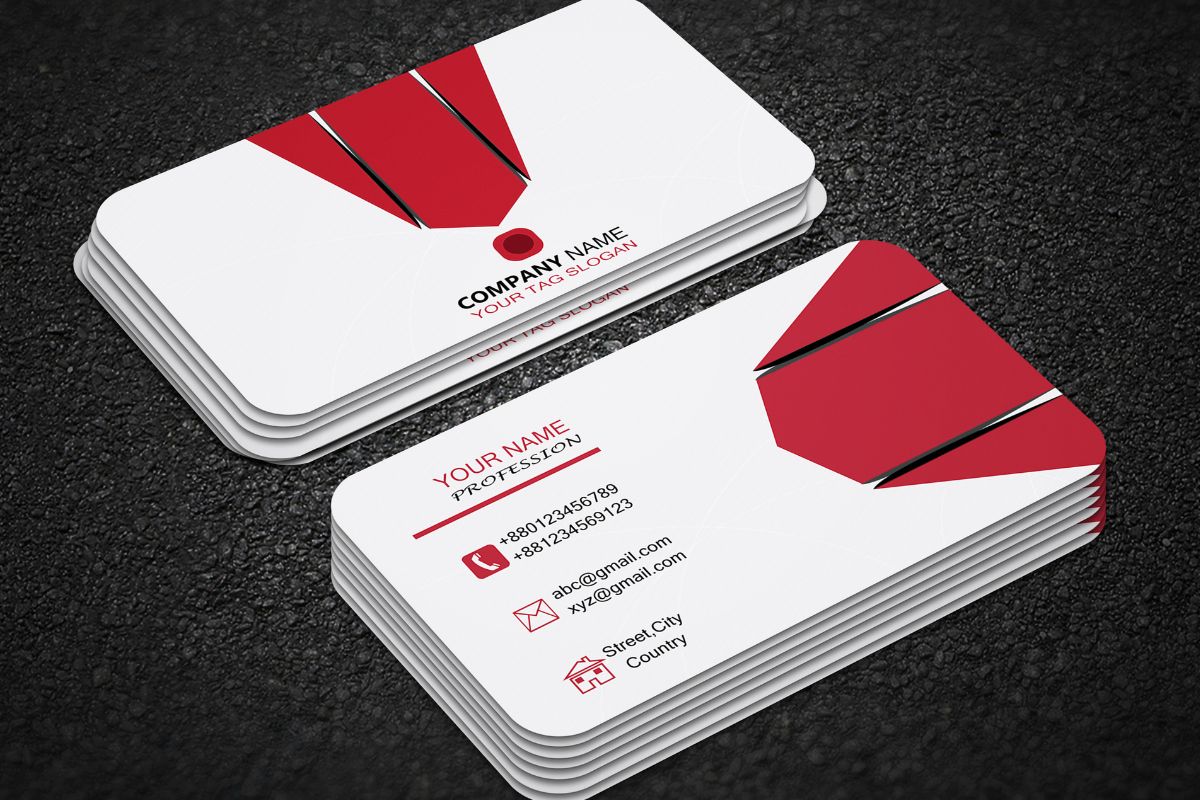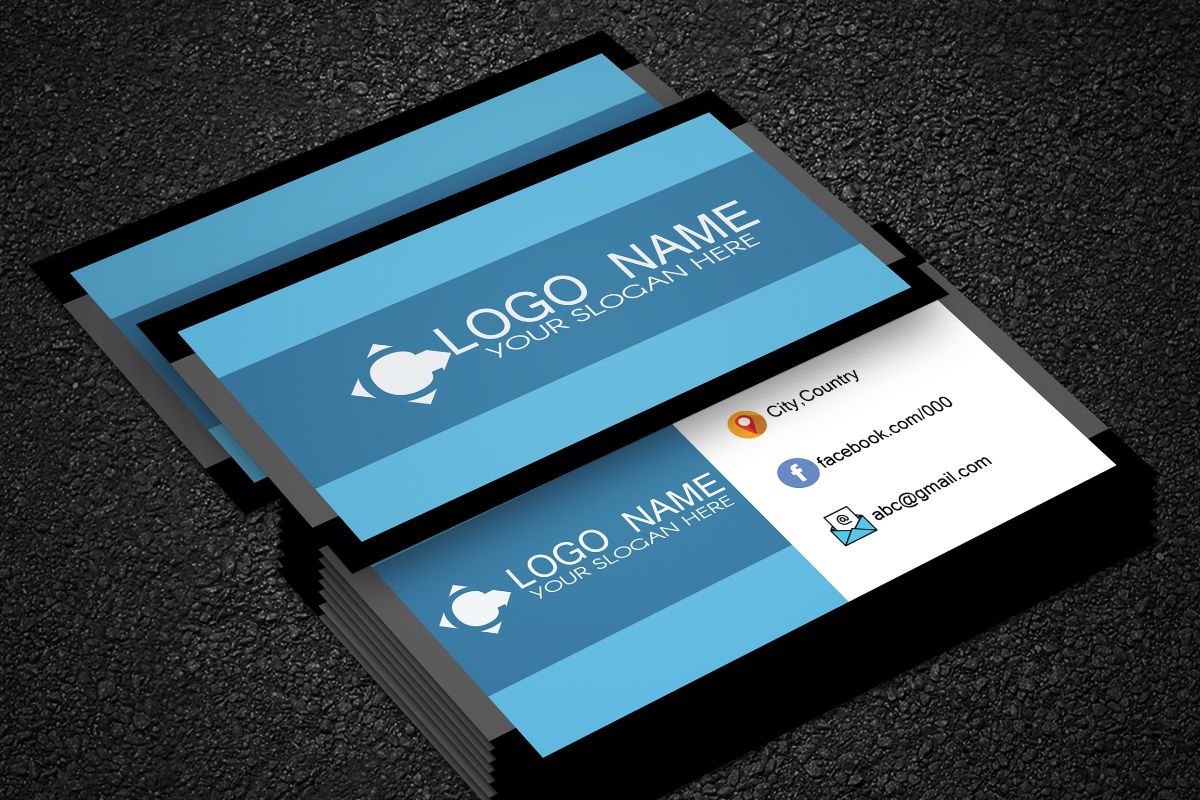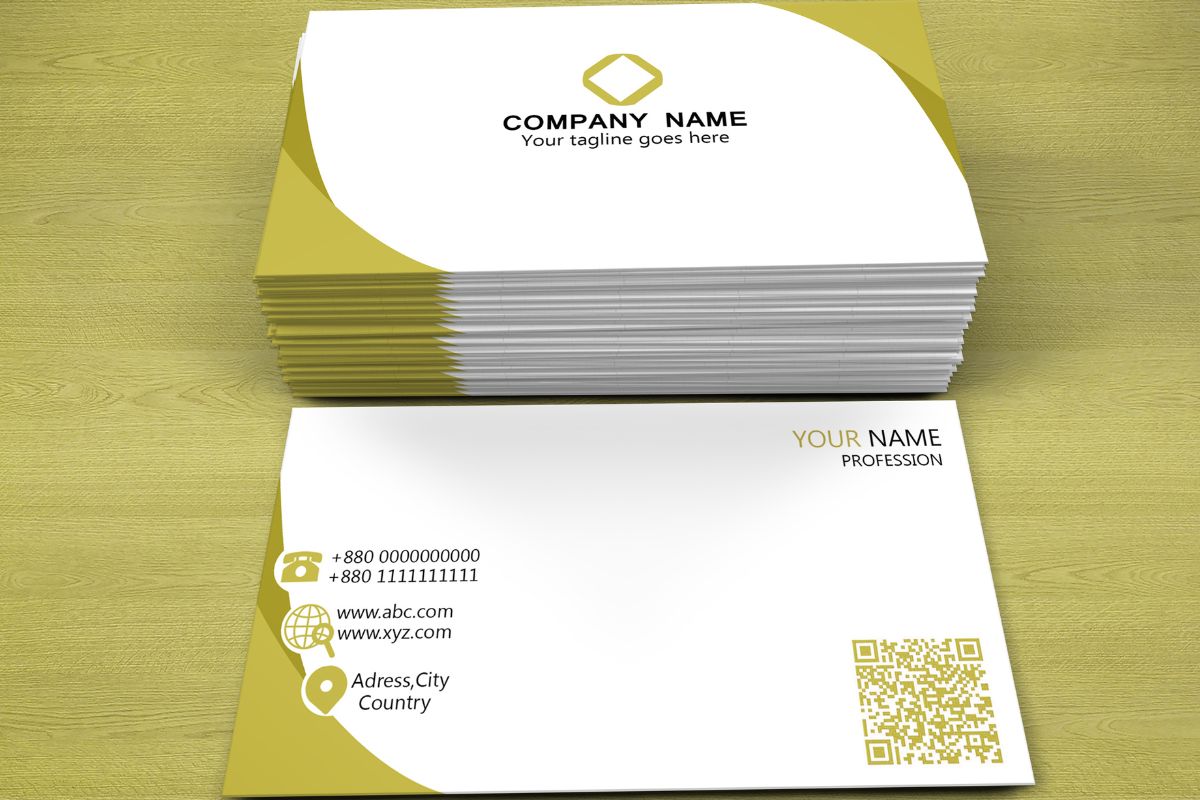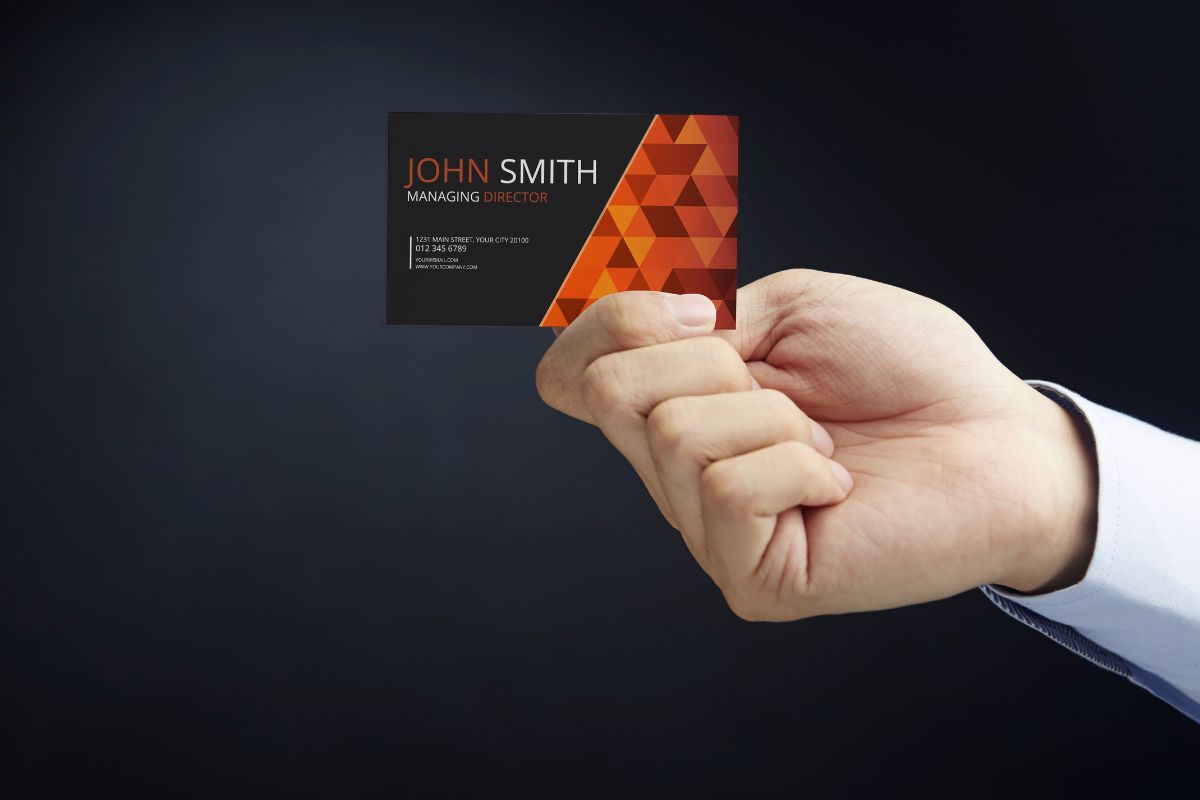The real estate on the back of your business card is valuable marketing territory that many professionals overlook. When handed a business card, it’s almost second nature for people to flip it over, expecting to find more information. This space provides you with a unique opportunity to convey a message that complements the front of your card, offering additional details or a special touch that might captivate the interest of a potential client or collaborator.
Carefully considering what to include on the back of your business card can set you apart and make your introduction memorable. From showcasing your brand’s ethos to providing a compelling call to action, this area allows you to amplify your message and reinforce your professional identity. Whether you choose to display a succinct list of services, an eye-catching image, or an engaging QR code that directs to your online portfolio, the back of your business card can serve as a powerful tool in your networking arsenal.
It’s important to use the back of your business card effectively, keeping in mind the balance between being informative and maintaining a clean, uncluttered design. Your choice should resonate with your brand and be strategically aligned with your networking goals, ensuring that every time you hand out your card, it reflects your professionalism and attention to detail.
Essential Contact Information

When designing the back of your business card, your goal is to make it easy for people to contact you. Here’s the essential contact information you should include:
Name and Job Title
Your name and job title define who you are and what you do. Make sure they’re prominent so people can remember and identify you at a glance.
Company Name
Italicize or bold your company name to make it stand out. This reinforces brand recognition and lends credibility to your card.
Phone Number
List your phone number using a format that’s easy to read. If you have a direct line and a main office number, you might want to include both.
Email Address
Your email address is vital for electronic communication. Keep the font clear and legible to avoid any confusion.
Website URL
Including your website URL is a non-intrusive invitation for contacts to learn more about you and your company online.
Branding Elements
Incorporate your brand’s identity on the back of your business card to make a memorable impact. This involves thoughtful representation of your logo, tagline, and color scheme.
Logo
Your logo is the cornerstone of your brand’s visual identity. On the back of your business card, it should be prominently displayed. For maximum impact, position it strategically to catch the eye immediately. Ensure the logo’s resolution is high enough to prevent any blurriness or pixelation, which could reflect poorly on your brand.
Tagline
Include your tagline to reinforce your brand’s message. This should be a concise statement that encapsulates what your business stands for. It’s your opportunity to communicate your brand’s value proposition in a nutshell, so select a font and size that makes it easy to read at a glance.
Color Scheme
Your brand’s color scheme plays an essential role in recognition and should be consistent with other marketing materials. Use colors that evoke the right emotions and associations with your brand. The color scheme can be a background, accents, or a full-color substrate but should maintain legibility of all text and design elements.
Social Media Profiles

Incorporating your social media profiles on the back of your business card not only enhances connectivity but also offers a glimpse into your professional persona. Ensure these profiles are current and reflect your brand consistently.
Include your LinkedIn URL to connect with professionals who may be interested in your background and experience. This platform is optimal for showcasing your professional achievements and network.
For quick communication and news sharing, add your Twitter handle. It’s a platform where conciseness is key and where you can demonstrate thought leadership in your field.
Your Facebook business page alignment is crucial if your audience engagement relies on this social medium. Ensure the URL is clearly mentioned so potential contacts can find you with ease.
If your brand benefits from visual storytelling, your Instagram handle is a must. Illustrating your work or products through this medium can capture attention effectively.
Services or Product List
When designing the back of your business card, listing your core services or products is a practical approach. This provides a clear snapshot of what your business offers, allowing the recipient to quickly understand your value proposition.
- Services: If you provide services, summarize them in a bulleted list. Keep descriptions concise to ensure readability.
- Consulting
- Legal Representation
- Accounting Services
- Products: If your business revolves around products, list the primary categories or top-selling items. Bullet points can also serve well here.
- Home Appliances
- Sports Gear
- Personal Electronics
To add clarity, you might opt for a simple table partitioning services or products into categories:
| Category | Items |
| Tech | Smartphones, Laptops, Cameras |
| Home Goods | Cookware, Furniture, Decor |
| Outdoor | Camping Equipment, Bikes, Grills |
Use typography strategically: consider making the list bold for emphasis, and use italics for subcategories or notes. Remember, the goal is to communicate your offerings instantly, so prioritize clarity above elaborateness. Keep in mind that a crowded list may overwhelm more than inform; therefore, spotlight only the key items that define your business.
Provide this information engagingly and attractively to not only inform but also leave a lasting impression. This is your chance to communicate the essence of your services or products, making the back of your business card a powerful business tool.
Call to Action
When considering what to include on the back of your business card, a Call to Action (CTA) is essential. This is the part of your card that prompts the recipient to take a specific next step. Crafting a compelling CTA can significantly increase the chances of forging a connection beyond the initial card exchange.
- Direct Approach: Command verbs such as “Call”, “Visit”, “Email”, or “Connect” are direct and to the point, leaving no confusion about what action you want the recipient to take.
For example:
- Visit our website for more information.
- Sign up today for exclusive offers.
- Offer Value: Present an offer or incentive that is enticing to the recipient. This could be a free consultation or a discount on services.
Example CTAs:
- Claim your free trial at our website.
- Get 20% off on your first purchase with this card.
- Use of Technology: Including a QR code that links to a specific page on your website or to a promotional video can make your CTA engaging and technologically savvy. This method is especially useful if you aim to direct clients to an online platform.
In selecting your CTA, ensure it is relevant to your business and provides clear value to the recipient. Your CTA should resonate with your brand and align with your marketing strategy. Remember, the aim is to make a lasting impression that encourages a follow-up action. Keep your message succinct and your design clean to maximize impact.
Qualifications and Certifications
When considering what to display on the back of your business card, your qualifications and certifications offer a unique opportunity to showcase your expertise. It’s essential to list credentials pertinent to your field, as they reinforce your professionalism and competence.
- Degrees: Start with the highest level of education relevant to your work.
- For example: MBA, Ph.D., B.Sc.
- Professional Licenses: Indicate if you’re a licensed professional.
- As in: PMP, RN, CPA
- Memberships: Include memberships of esteemed professional organizations.
- Such as: PMI, AMA
- Certifications: Highlight any special certifications that give you an edge in your industry.
- E.g., Six Sigma, Certified Scrum Master
- Trade Certificates or Apprenticeships: These are particularly important if you’re in a trade that values hands-on experience and specialized skills.
- Software Certificates: In tech or design fields, software proficiency can be a game-changer.
Consider this format for clarity:
| Credential Category | Specific Credential |
| Degree | MBA |
| License | RN |
| Certification | PMP |
| Membership | PMI |
Remember to keep the layout simple and the typography legible. Use the backside wisely—overcrowding can diminish the impact of your most significant achievements. For a more in-depth guide, you might find How to Include Certifications on Your Business Card helpful.
QR Code

In the evolving landscape of digital networking, including a QR code on the back of your business card can modernize your exchange of information. QR codes provide a seamless way to connect others to your digital presence, allowing them to access deeper layers of information about you or your business with a simple scan using their smartphone camera.
When incorporating a QR code:
- Make sure it is clearly visible and uncluttered to ensure easy scanning.
- Test the code before printing your business cards to confirm it directs to the correct online location.
- Keep the design in line with your brand’s aesthetic; it should complement your card, not overpower it.
Your QR code can link to various assets:
- Your professional website, containing an extended bio or portfolio.
- Direct contact details like an email address or phone number.
- Promotional materials such as brochures or catalogs.
- Upcoming events or webinar registrations.
- A digital business card that can be saved to the phone’s contacts.
For detailed considerations and creative ways to implement a QR code on your business card, refer to articles such as 7 important notes to think about before you add a QR code to your business card.
Remember, adding a QR code to your business card is about convenience and added value for the recipient. Keep your end goal in mind: to provide them with relevant information in the most accessible way.
Physical Address
Including your physical address on the back of your business card can be beneficial for several reasons:
- Establishes Trust: It demonstrates that you have a legitimate, stable location for your business.
- Local Marketing: Shows that you are part of the local community, which can be appealing to customers who prefer supporting nearby businesses.
Consider the following when adding your address:
- Relevance:
- Do you have a brick-and-mortar presence? If yes, sharing your address is essential.
- Are you home-based or online? Only include your address if comfortable and it adds to your credibility.
- Privacy: Balance the need for providing a location with any privacy concerns you may have, especially if you work from a home office.
- Design: Ensure the address is in a readable font and size, maintaining design consistency with the front of your card.
- Compliance: For regulated industries, having an address can be a legal requirement. Be aware of your industry standards.
Here’s the information you should include:
- Business Name
- Street Address: Including suite or office number if applicable.
- City, State, Zip Code: These are critical for guiding clients to your location.
- Country: Important for international business interactions.
Keep the design clean and uncluttered. An overloaded business card can appear unprofessional. Use this space wisely to ensure the recipient of your business card will have all they need to find your location easily.
Appointment Scheduler
Utilizing the back of your business card as an appointment scheduler is an efficient and practical way to maximize the utility of your card. By doing so, your business card transforms into a multi-purpose tool that not only provides contact information but also helps in managing appointments.
To create an effective appointment scheduler, consider the following elements:
- Date and Time: Reserve space for writing the date and time of the next appointment. This information is crucial and should be easily legible.
- Service or Purpose: Leave a section for the specific service or purpose of the appointment. This will help your clients remember what the appointment is for.
- Notes: Providing a small area for additional notes can be helpful. This can include reminders, preparatory instructions, or any other relevant information.
Remember to use a clear and legible font and consider the space it takes to write information by hand. Ideally, opt for matte or uncoated cardstock as it is easier to write on compared to glossy finishes.
By integrating an appointment scheduler on your business card, you give clients a tangible reminder of their commitment, which can reduce no-shows and foster punctuality. This thoughtful addition not only enhances the functionality of your business card but also provides a subtle touch of customer service.
Frequently Asked Questions
In this section, you’ll find clear and specific answers to common queries regarding the use of the back of your business card.
What information is typically included on the rear side of a business card?
The rear side of a business card can feature various elements such as a lead magnet, a brief list of services or products, a mission statement, or even social media handles to enhance networking.
Is it advisable to leave the back of a business card blank for notes, or should it be utilized for content?
While some professionals prefer to leave the back of a business card blank for notes or personal messages, using it for content can add value and serve as an additional marketing tool.
How can the back of a business card be effectively used for marketing purposes?
You can turn the back of your business card into a powerful marketing tool by including an engaging call to action or a unique selling proposition that resonates with your target audience.
What are some creative examples of back-of-business card designs, especially for real estate professionals?
Real estate professionals often use the back of their business cards to showcase properties, provide testimonials, or list awards and key accomplishments that help them stand out in a crowded market.
How important is it for the back of a business card to complement the front in terms of design and information?
It’s crucial that the back of your business card complements the front so that the card presents a cohesive brand image. The design and information should work together to create a memorable impression.
What are some concise yet informative messaging strategies for the back of a business card?
Concise messaging strategies for business cards might include a succinct tagline, essential contact details, or an impactful quote that aligns with your business values and encourages people to reach out and engage with your services.



